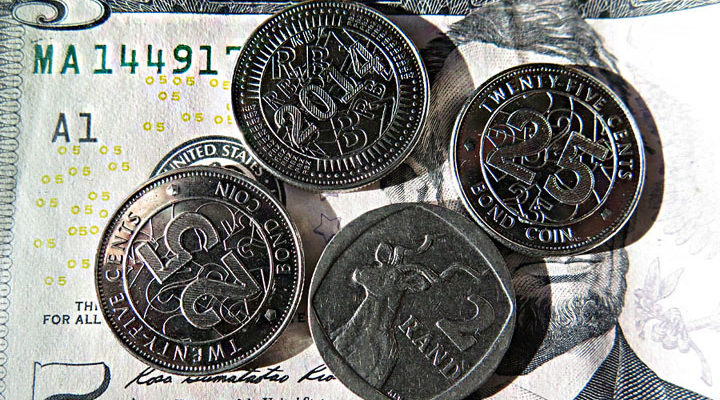When it comes to currency management in Zimbabwe there is always déjà vu which is a result of repeated fallible prescriptions. It's a circus where the actors enjoy their never-ending play with the audience relegated to idle agents in their slumbers. This circus started in 1997 and has degenerated into a vicious cycle that is never ending.
For long, debate has been centred on currency as a panacea to the myriad economic challenges with little emphasis on other simulants like investment, production, institutional savings and financial sector development. The result has always been systemic tweaks which are unbeknown to conventional monetary management and have tragically failed. Einstein's definition of insanity cannot be emphasised any further because from the unchecked money printing machine of 1997 to the introduction of Travellers/Bearers cheques as formal tender and the bond notes of 2016, Zimbabwe could have done something differently to save her economy.
We explain two key highlights and policies of currency management initiatives that have been developed so far and why they have failed.
Introduction of the bond note
When bond notes were promulgated as export incentives in May 2016 there was no understanding they would become a fully-fledged currency accessible to everyone even those outside exporting businesses. As a facility that had the backing of the BBB+ rated (Global Credit Ratings) Afreximbank, the assumption was bond notes, would be a commercial paper that would have its expiry and value tied to Afreximbank loan terms. On the contrary, the bond note was universal and had nothing to do with exports. Its value was an arbitrary dictate of parity with the dollar but all that has crumbled now with the current formal trades going at a ratio of 1:7 with the dollar.
The policy makers desire was to see the bond note or the export incentive rather, working, but how did it fail?
There is rational in promoting exports through various incentives, especially when the economy is not performing well but there is absolutely no rational in borrowing USD500 million from the Afreximbank to print a pseudo currency that would be parcelled out to exporters as incentives. It was not difficult for policy makers to identify key export industries, their needs and capability to repay credit funds, and facilitate the USD500 million Afreximbank loan on their behalf. The unconventional economics of deriving pseudo monetary instruments from a credit facility failed this idea of an "export incentive".
Since the idea of "export incentives" crumbled from the initial stages, bond notes became a derivative of the USD that became legal tender. Economic theory is like a prophetic thesis which is built around fine mathematical models and most importantly history. As early as the 16th century, Gresham observed that a mixture of good and bad money is never sustainable as good money is subsequently driven out of the system. Bond notes and the USD were never going to be the same despite all antics and pronouncements that they had the same intrinsic value save for the face design. This day we are paying the price of unconventional currency management processes that turned us blind to the Gresham law.
The Travellers and Bearer Cheque phase
Rewind back to 2003 when money supply was a real problem and the short-lived Travellers cheque became legal tender that was succeeded by Bearers cheque and ultimately the Special-Agro cheque which came around 2008.
There was an underlying problem to all the currency mess, but monetary authorities chose giving special names like Bearer's or Agro cheques and slashing zeros as the way to cure the ailing economy. There was virtually no production in the broader economy and that is an issue
Way forward
The economic crisis in Zimbabwe is not tied to the currency. Whether the country adopts conventional or unconventional currency management initiatives there is no end in sight to the challenges the economy is facing if the root cause is always identified as "currency". The patient is suffering from a mild flu, but the physician has recommended a complicated anaesthetic procedure where he could just write a simple prescription. What it means is we have complicated our economic recovery initiatives by basing and experimenting all efforts on currency reform. Whether we adopt the strongest currency in the whole universe or the strategically important South African Rand or return to local currency the economic problems will remain unless the production question is addressed. Money follows production and instead of debating about which currency to adopt it is wise to address production challenges in the economy. Currency and money is a derivative of production. There is no way the economy can fix the currency issue when there is no production to support it. Wherever it comes from, currency is sustained by production which is why the famous street lingo "money doesn't grow on trees" holds.
Zimbabwe must work for her money!
Ngonidzaishe Makaha and Adrian Mapiye write blogs which cover financial analysis, equities, financial inclusion, development finance, analytics and Cybersecurity. They write in their personal capacities.
- businesstimes
 Concern over Masvingo black market
Concern over Masvingo black market  Kenya declares three days of mourning for Mugabe
Kenya declares three days of mourning for Mugabe  UK's Boris Johnson quits over Brexit stretegy
UK's Boris Johnson quits over Brexit stretegy  SecZim licences VFEX
SecZim licences VFEX  Zimbabwe abandons debt relief initiative
Zimbabwe abandons debt relief initiative  European Investment Bank warms up to Zimbabwe
European Investment Bank warms up to Zimbabwe  Young Investment Professional (YIP) Graduate Programme 2019
Young Investment Professional (YIP) Graduate Programme 2019 











 Young Investment Professional (YIP) Graduate Programme 2019
Young Investment Professional (YIP) Graduate Programme 2019
Editor's Pick